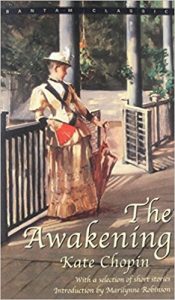
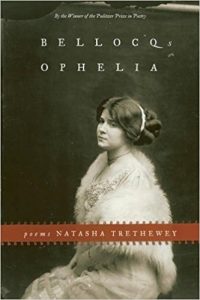


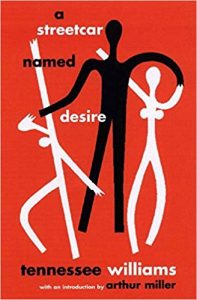
December 20, 2017
by JGB
Comments Off on Texts

December 20, 2017
by JGB
Comments Off on Texts





May 8, 2018
by bekisz20
Comments Off on Music in New Orleans: It Takes Many Artists to Make One Voice
Aside from its food and Mardi Gras traditions, New Orleans is arguably most famous for its influence on the music scene, particularly jazz music. Known as the birthplace of jazz, it shaped the genre for the rest of the country. Like the city, the music of New Orleans is made up of ingredients that give it a flavor all its own. It can’t be found in its genuine state anywhere else – a little like its gumbo.
There are many artists whose names are synonymous with New Orleans music, and their songs have echoed along the Crescent City’s musical streets for decades. Some songs, like James “Sugar Boy” Crawford’s “Jockomo,” have been covered numerous times by many artists in their own unique styles, but other artists gained credit for making the songs famous. Each rendition of a song takes on a special character of its own, and its voice echoes that of its era and the character of its cover artist(s). Another song, “Tipitina” by Professor Longhair, was never a chart-topping song, but it inspired the founding of the Tipitina bar, where the esteemed professor could be found showcasing his music for the remainder of his life following the venue’s establishment.
James ‘Sugar Boy’ Crawford was a New Orleans native who spent his whole life there and wrote the famous Mardi Gras song “Jockomo,” otherwise know as “Iko Iko.” Made famous by the Dixie Cups in 1965, the song had actually been around for more than a decade, as it had been first released in 1953. The song had been written about the Mardi Gras Indians, and some of the lyrics had been used from Crawford’s recollection of their chants. Crawford grew up fearing the Mardi Gras Indians, who have a history of frequent violent encounters that have since ended and have been replaced by rivals chanting at each other. The song was credited to the Dixie Cups for writing it until Crawford filed a lawsuit and fought for his rights to the song. He won, in part, and received partial royalties for it. Since the Dixie Cups’ 1965 cover of “Jockomo,” the song has been covered by numerous other artists in unique and sometimes criticized styles, including Dr. John, Cyndi Lauper, and Henry Butler.
May 7, 2018
by byrd19
Comments Off on Free Women of Color: To Exist Between Worlds
Throughout modern history, Gens de Couleur Libres, or the Free People of Color, of New Orleans have captured the attention of both historical scholars and New Orleanian culture enthusiasts alike. Their precarious position within the complex racial and economic hierarchy of New Orleans continues to be a topic of great interest as it defies the expected social norms of the time. Free people of color in New Orleans, particularly those with a large amount of European ancestry, occupied a distinct space between privilege and extreme oppression that entailed adherence to a unique set of explicit laws and unwritten social constraints. Members of this tight-knit community, most often descendants of enslaved Africans, Native Americans, and Europeans, neither experienced the immunity of whiteness nor the complete subjugation of chattel slavery. Existing within this murky space necessitated that free people of color, especially women, learn to navigate the pitfalls of existing as a marginalized citizen with caution and great intelligence. In my research, I sought to explore the ways in which the women of this culture operated within this incredibly nuanced society during the 1700s and 1800s as well as the way this multiracial society viewed them as an independent group.
May 7, 2018
by vanderzon21
Comments Off on Jean Lafitte: The Smuggler, The Villain, The Hero
History has glorified the exploits of pirates around the world, romanticizing the thefts, murders, and kidnappings that define these buccaneers’ lives. Jean Lafitte has immortalized himself in the history of the United States; as well as the history of pirates. He became a folk hero akin to Daniel Boone, Annie Oakley, or Wyatt Earp, while in the same breath standing beside Blackbeard (or Edward Teach), Captain Kidd, and Ching Shih. This begs the question of why are pirates, and Jean Lafitte in particular, so exalted? Despite being painted a hedonistic rogue by the government, could Jean Lafitte be a scoundrel and hero simultaneously? Continue Reading →
May 7, 2018
by ahson21
Comments Off on Corruption Throughout Angola and the New Orleans Correctional System
Correctional facilities were established for retribution, incapacitation, deterrence and rehabilitation of the delinquents throughout society. However, across the United States many of these correctional facilities are flawed and subject to corruption. One of the most notoriously known corrupt systems is the New Orleans correctional system, which feeds into the states penitentiary, Angola. Both the state penitentiary and the system itself present flaws which lead to the questions of: Does the structure of the correctional system cause Angola prison to be more susceptible to the mistreatment, neglect and abuse of their prisoners? Also, what is the effect of corruption in governmental affairs on the correctional system and facilities? These questions must be answered in order to alleviate not only the system in New Orleans, but nationally, of the present flaws and inadequacies. Continue Reading →
May 3, 2018
by macurak21
Comments Off on Taking Down the Confederacy
April 24, 2017 completely changed the lives of the people of New Orleans. This day started a movement around the world that is still continuing into 2018. The major of New Orleans, Mitch Landrieu, made the executive decision to take down the four Confederate monuments that stood in that city. Many people have their own views on why these monuments were taken down, those who oppose it and those who support it wholeheartedly. Mayor Landrieu did not realise that some of the people that he saw everyday felt negatively about the statues. He did not know that it was hard for them to pass by the Robert E. Lee monument or the P.G.T Beauregard statue everyday. Mayor Landrieu took down the four Confederate statues to honor those that the statues did not. But how did the action of taking down the statues pay tribute to the past, present, and future generations of the many minorities that make New Orleans what it is?
May 2, 2018
by kbekisz20
Comments Off on A Painting of New Orleans: The American World of a French Artist
Edgar Degas was an incredible artist by any standard. A world-renowned painter, he was born in France, and he spent most of his life living and working there. However, for a brief period of time, he lived in the city of New Orleans in a tumultuous United States, and it contributed greatly to his art. He brought inspiration back with him to France when he left, and living in New Orleans was apparently a formative experience for him, however brief his time there was. The home in which he stayed is on the National Register of Historic Places, and is the only residence or studio in the world that is related to him and that is open to the public. While it is hidden away, the New Orleanian people are proud of having a connection with the famous artist, perhaps in no small part because he was French; French culture has deep roots in New Orleans. Exploring his importance to the city is best done by discussing why he came there and the historical events of the time, looking at his work to compare it to later art he did after returning to France, and comparing his work to that of other artists who were in New Orleans during his residency. By answering these questions, it is possible to speculate what influence Degas discovered in New Orleans that so greatly inspired his career. Continue Reading →
May 2, 2018
by gaile17
Comments Off on Food Brings People Together
The social culture of food in New Orleans is seen through the familial passing of recipes. As I will discuss further on, gumbo is a family dish. The passing down of recipes is a way for families to create a lineage through something other than bloodlines. As a recipe passes from member to member, it creates a bond between the two and this bond can be seen when the food is made for others. The discussions between people about where the recipe originated lends to the rich history of the city. Many of the flavors that are common within New Orleans cuisine come from Spanish, French, Native American, and African influence. Many of the main dishes can be connected to the migration of people to the city. Continue Reading →
April 26, 2018 by JGB | Comments Off on New Orleans Mayor Mitch Landrieu’s Address on Removal of Confederate Statues
April 19, 2018 by JGB | Comments Off on Théodore Géricault, “The Raft of the Medusa”
April 16, 2018 by JGB | Comments Off on The Wild Tchoupitoulas, “Brother John”
April 9, 2018
by macurak21
Comments Off on Margaret Wilkerson Sexton’s “A Kind of Freedom” Quotes
‘His pants legs are uneven,’ Ruby said about the new boy standing on North Claiborne and Esplanade wearing a brown wool suit, a grey V-neck sweater beneath the jacket. (2)
‘Whether you did or you didn’t,’ Renard went on, ‘it’s mighty nice on you. I reckon this is what an angel on earth looks like.’ He stammered all over that last sentence, every single word but an, but that was because he was nervous saying what he meant, and their nervousness together was like two negatives multiplied. (16)
From then on, Evelyn woke up each day with a renewed tolerance for the world; the feeling she’d been searching for her whole life had been missing because she hadn’t met Renard, and now that he was here, she could grasp the higher octave of joy her solitude precluded. (28)
‘You say what you want,’ her mother repeated. ‘You think you know everything, but one thing you can’t know is how much I love that child. You didn’t carry her, nor did you push her out. You’re a mighty good provider, but you didn’t learn her how to eat with a spoon and tie her shoes and write her first word, and for those reasons alone you can’t know.’ Her voice broke. ‘My love for her took over when I had her. There’s no room of anything else.’
Evelyn’s daddy’s sharper heels tapped, then stopped.
‘Well, I love her too, and I won’t have her fighting her way through this life. It’s already hard enough. I won’t make it harder, I can’t. I promised myself that. (40)
They almost made her forget her chronic grief, the guilt that tugged at her heart because despite everything Terry put her through, who knew what trouble he was in right that minute? Maybe she would have fought harder for him to stay. (43-44)
In fact, standing here now beside her sister who had never laid beside a man in bed, listened to his dreams, then saw them dashed at every turn, who had never become so entwined with someone it was impossible to kick him out without feeling like a part of herself had been rejected, she had a sudden urge to defend Terry. (53)
T.C. shook his head, but he didn’t protest. If you had to convince people who you were, it was too late, isn’t that what his grandmama always said? (65)
‘Bruh, I ain’t trying to think about that right now,’ T.C. said. He opened up the passenger door. The truth was it all he had been thinking about. it was jailhouse policy to declare you weren’t coming back. He didn’t know anybody who hadn’t screamed it across his cell at least once in a fit of rage or desperation, or repeated it to himself like a prayer during meal lineup, and that wasn’t easy to say he didn’t believe it. He did, but something happened when you walked away from those prison gates: Freedom and its expansive nature convinced you it could last forever. The promises you made to yourself flitted from the front of your consciousness. It was funny, but already, not even in the car that would take him away, he could remember the allure, the fast money, the easy power of his old life. The one thing was, he was never really good at it, and there weren’t too many other things he could say that about anymore. (69)
What happened to the face of a broken woman? Did it turn to convey the loss or did it conspire with her heart to hide it? Looking at her, she thought it was the former. (99)
She leaned closer to him now. ‘Well, Renard, I haven’t known you long, but I know you well, and the man I fell in love with is a fighter. He wouldn’t let somebody else define him one way or the other. He wouldn’t give up hope, not now, not when he needed it more than ever.’ (110)
‘What do you want me to say?’ she belted out. ‘I have to think about what they want, what they care about, because if this doesn’t go well, they’re all I have to depend on.’ She paused. She wondered if she should have let him into her worry, if it would infect him, send him back on those streets. She kept going. ‘I’m afraid, Terry. I’m terrified. I’m trying to stay in the moment, but I told myself I’d never let you in again, and here I am, looking forward to you coming home, letting the baby warm up to you.’ She started crying when she thought about her son. ‘I didn’t think it would be this easy to fall back into where we were.’
‘I didn’t think so either,’ he said. He reached for her hand again. ‘I’m scared too,’ he added. ‘I’m scared too.’ (132)
Tiger shrugged. ‘I just think it’s rare what y’all have, that’s all. I ain’t never had nothing like that, but if I did, I wouldn’t fuck around with it. I would treat t with respect, you feel me?’ (152)
And something about seeing her nurture his son made T.C. feel as if he was being nurtured, made him feel as if he would be nurtured for the rest of his life. (172)
It was easy to pretend to be good when you were courting someone, and everything rode their quick opinion of you, but when you had secured their love, and there was nothing left to fight for, it was the rare man who was in constant war with his own sense of himself. (185)
‘You got to live your own life. Bad or good, it’s got to be yours.’ (198)
It was about knowing that whatever pain had driven him out had managed to touch her too, and she didn’t have crack to deliver her from it. (210)
If she was listening, she would have heard the sirens building in the distance, then traveling off, meeting their target, but as it was, her mind was as focused as a tide breaking, ready to crash. On what, she didn’t know. (210)
But to see his best thing, the person he’d let down most throughly, witness what a fuckup he’d become, well that would have broken him, and he didn’t think he’d be able to recover. (214)
Evelyn’s father turned to her finally, gave her a look of sad surrender, and said, ‘Okay.’ Then he stood, shook Renard’s hand, picked up the sandwich Evelyn’s mama had packed for his next round, and left the table. (221)
All of a sudden, she wanted to reach backward, cling to the man who had been her most sturdy guide, but he was already joining Mama in the hallway, and she was left afloat with her man, yes, with her unborn child too, but weren’t they virtual strangers when she compared them to her family? What if she had mischosen? What if her father was right?
As if her daddy’s consent triggered her own mistrust, she found herself staring at the leg of Renard’s hem, which was still uneven if she looked closely, though it seemed someone had tried to mend it the night before. (227)
March 20, 2018
by ahson21
Comments Off on A Comparison of Identity
Throughout this course, we have read three different books: The Awakening, A Streetcar Named Desire, as well as The Moviegoer. These three books deal with the struggle of each individual to find their role and meaning in society. This existential conflict is one that has plagued society for ages, with humans desiring approval and acceptance from their peers. Comparing the characters in these books, all reach a point in their lives where they discard their identity formed by the different forces of society for an identity in which they desire. Binx and Kate from The Moviegoer discard their previous identities, Kate leaving her fiancé and running away together to purse a “happily ever after ending.” In A Streetcar Named Desire, we follow Blanche as she is trying to portray her desired identity, wearing frivolous furs and jewels to cover up her real identity which was stained with sinful acts of prostitution and inappropriate affairs. Lastly, in The Awakening, Edna has a similar break from the mold as she runs away from her husband to be with Robert and eventually commits suicide. These acts of defiance against societal norms are brought upon by the rigid structure put upon women as second to their male counterparts, their ideas and values holding little weight and importance during this time period.
March 20, 2018
by bekisz20
Comments Off on Imprisoned
The Moviegoer by Walker Percy features many complex characters aside from Binx Bollings, who is the main subject of the book. These characters include his Aunt Emily and his cousin Kate. While Aunt Emily is a force of nature over her domain of influence, Kate, her adoptive daughter is still recovering from a car crash resulting in the death of her fiance. Kate closes herself off to the world at times, refusing to appear at social functions, unwilling to speak even to her family. Although Kate is not the main character, I see a similarity between Kate and the main characters of the Awakening, A Streetcar Named Desire, and Belocq’s Ophelia. Each woman feels trapped by her past and by her surroundings. Edna feels it in her relationship with her husband and in her love for another. Society does not allow for what she desires, and it traps her. Blanche’s past follows and haunts her wherever she goes, capturing her in the fear that the rest of the world will learn her secret. Her sister Stella begins to feel that her own relationship with her husband is trapping her as a result of Blanche’s presence in her house. Ophelia too has a past that she cannot escape, and as she seeks a new life she finds only a new type of prison as her shelter. Kate, by comparison is prisoner to her emotions. Just as it seems that she is opening up, she withdraws into herself again. Each woman in these books feels, whether consciously or unconsciously that she is a prisoner to her surroundings, her past, or her own emotions.
March 20, 2018
by gaile17
Comments Off on Invisibility in New Orleans
 The characters that we have discussed in the class so far have felt invisible within their own worlds. Binx feels invisible when he is surrounded by others, and Ophelia felt invisible in the house until she was auctioned off. Edna was visible to Robert and Mml. Ratignolle, but she was little more than an ornament on her husband’s arm. These connections of invisibility seem surprising because there is evidence of their visibility in each story, yet these characters go through a crisis of identity due to their perceptions. The connection between Binx and Stella is similar, yet their respective outcomes are different. They both fought against their families’ expectations for their futures. Their outcomes are vastly different, and in a way they play into their sense of invisibility. Binx fights and still ends up following his family’s expectations. Stella fights, wins, and ends up in a situation that she is seemingly happy in. It’s not until her sister is taken away that she realizes the damage of her situation, and it’s almost as if she would like to be invisible in the last moments of the play. In a city so large, it is understandable how people can become invisible, but the worlds that these authors have created are so small that their characters’ invisibility is monumental.
The characters that we have discussed in the class so far have felt invisible within their own worlds. Binx feels invisible when he is surrounded by others, and Ophelia felt invisible in the house until she was auctioned off. Edna was visible to Robert and Mml. Ratignolle, but she was little more than an ornament on her husband’s arm. These connections of invisibility seem surprising because there is evidence of their visibility in each story, yet these characters go through a crisis of identity due to their perceptions. The connection between Binx and Stella is similar, yet their respective outcomes are different. They both fought against their families’ expectations for their futures. Their outcomes are vastly different, and in a way they play into their sense of invisibility. Binx fights and still ends up following his family’s expectations. Stella fights, wins, and ends up in a situation that she is seemingly happy in. It’s not until her sister is taken away that she realizes the damage of her situation, and it’s almost as if she would like to be invisible in the last moments of the play. In a city so large, it is understandable how people can become invisible, but the worlds that these authors have created are so small that their characters’ invisibility is monumental.
March 20, 2018
by byrd19
Comments Off on Contrasting Quests
The rediscovery of “The Search” is one that affects both Binx Bolling in The Moviegoer and Edna Pontellier in The Awakening. These characters’ journeys are both marred by a sense of unease that, once acknowledged, spurs them to analyze their lives and the societies they are a part of. “The Search” causes them to become critical of the ways in which they go about their daily lives and become dissatisfied with the course they have set themselves on. Binx’s and Edna’s journey differs not only in their endings but in that they operate from different levels of privilege and freedom during the unfoldings of their stories.
Edna emerges from despair into “The Search” and finds herself still entrapped by the world in which she lives. Although she has become self-aware, she is still, in some ways, held captive to the despair she seeks to leave behind. Her situation is in contrast to Binx who, although he feels trapped by expectations as well, has more power to change the way he lives if only he sheds his apathetic instincts. The pressure from his family, although formidable, is not as all-encompassing as the societal pressures Edna faces. This makes it all the more interesting that Binx eventually cows to the hopes of his family and sacrifices his autonomy in order to settle into the safety of ordinary life while Edna chooses death as opposed to a life in personal captivity.
March 20, 2018
by vanderzon21
Comments Off on Subtexts
Binx and Kate are two characters that pivot around the world, attempting to get a foothold in the world. Their understanding of their roles in the world waver constantly as this can only find dissatisfaction in their lives. In this manner, Binx and Edna Pontellier are similar. It takes the introduction of an external figure to make them realize they want something more out of life. Robert provides a channel through which Edna can experience a new culture, a place where she can find freedom, and finally discover and embrace herself. In this manner, Kate is Binx’s channel through which he sees true sorrow, as well as a hidden joy. In taking care of Kate he finds purpose, and eventually love that he was previously lacking. Unlike Edna, Binx had the means to continue to live his frivolous lifestyle prior to meeting Kate. He was able to advance, and still be accepted by society. Eventually, due to his newfound inspiration in Kate, he is able to return to the lifestyle his family wished upon him. Edna was not able to have this opportunity, as her freedom contradicted her status and familial obligations – which ultimately resulted in her quietus.
I believe that Kate and Blanche are similar in their backstories, and personalities. Both have lost a loved one, which has driven them to depression and “madness”. Yet under this madness, there appears to be underlying control, as if the madness is a subterfuge. They are both able to perceive the people around them; as Blanche knows Stanley’s true motives, and Kate understands Binx’s aim to calm her when he takes her to “Panic in the Streets” after her anxiety attack. Despite their outward disconcerted appearances, they understand the subtext of the world, the complex and contradictory manners in which people think which allows them to continue to venture through the world.
March 20, 2018
by macurak21
Comments Off on Edna, Blanche, Binx, and Kate
While reading The Awakening and A Streetcar Named Desire, I thought that it was very evident that the main characters suffered from depression or another mental illness. Edna was very sure of what she wanted in life, but she knew she could never have it, and this resulted in her ending her life. Blanche was never aware of her illness or what she was doing to the people around her. She didn’t even know what was going on when she was taken away by the Doctor.
In The Moviegoer, Binx reaches a point in his life where he wants to find out who he is, kind of like how Edna did. But Binx is happy with how his life is going and how it might turn out; he doesn’t have any worries. Edna is different in that sense; she is not happy and she can’t live the life she wants because she has people and different circumstances that are preventing her from doing so.
With Kate, I can see Blanche and Edna in her. Kate is controlled a lot in the story, like how Edna and Blanche were. Blanche was controlled in a way by Stanley because he always forced her into things and was very forceful with his actions towards her. In my opinion, I feel like Edna was being controlled by herself, as if she knew that she wanted different things in her life, but she also knew that she couldn’t allow herself to obtain those things. Kate has depression like Edna did, but she doesn’t succumb to the same outlook that Edna did with taking her own life.
March 16, 2018
by kbekisz20
Comments Off on Drifting
In many ways, Binx in The Moviegoer is a similar character to Edna Pontelier in The Awakening. Of course, Binx is male and Edna is female, but their struggles are eerily reminiscent of one another. Binx is a man who is perfectly content to drift through life; that is, until he discovers the idea of a search. What is he searching for? Not even he is entirely sure of that, but he is struck with a sudden desire to find himself. Edna is in a nearly identical situation. She knows that she is not happy, but she cannot figure out why. She is told by everyone around her that she should be content with what she has, but it is not enough. She too is drifting through her own life, until she starts to take control. The main difference is that Binx is happy with his lot in life until he discovers something to search for, but Edna is never happy. There are also similarities between Edna and Kate, who is Binx’s cousin. She is depressive and lost, floating through her life. Everyone tries to control her, like Edna is controlled. The two women have to break free of the restraints of their life in their own way. Both books even have tones that mirror one another. The sense from both stories is one of existentialism, which contributes to the depressive and uncertain mood of the characters as they go through their search. The similarity is striking.
March 13, 2018
by bekisz20
Comments Off on Musical Perceptions of and Within New Orleans
New Orleans is such a diverse city, with a diverse people and a unique music scene. Outward perceptions of the city only scratch the surface of the rich culture it contains. Those who have heard nothing of the city but its tourist attractions fail to understand that the city holds depths of musical culture, layered by the passage of time and the evolution of its people. Music can be seen as a unifier like no other and it speaks to the soul. New Orleans is a place bustling with festive noise, but what can the city tell you if only you listen to its songs?
New Orleans is known across the country for Jazz music, and the genre is considered to have originated there. While jazz is widely associated with New Orleans, according to The Culture Trip it can also be associated four other genres: Blues, R&B, Zydeco, and Bounce. The diverse history of the people of New Orleans is one reason for its deep saturation of music. The city was “born of both hope and despair” and “fueled by the influx of enslaved Africans to the waves of immigrants from places like Sicily, Ireland, Germany and, in more recent years, Mexico and Central America (New Orleans website).” This melting pot has resulted in a cultural and musical blend like nowhere else. How has each people group and their individual pasts affected the evolution of music in New Orleans?
Questions I would like to address:
How has each people group and their individual pasts affected the evolution of music in New Orleans?
How has the city’s tragic past influenced music within the city?
How have musicians and the music from New Orleans influenced the musical culture elsewhere?
For more information, visit:
https://www.npr.org/2017/07/15/537224556/in-new-orleans-theres-a-piece-of-music-history-around-every-corner
https://www.nps.gov/jazz/learn/historyculture/jazz_history.htm
https://www.neworleans.com/things-to-do/music/history-and-traditions/
March 13, 2018
by byrd19
Comments Off on Free Women of Color
In my research, I plan to explore the roles of Free Women of Color in Antebellum New Orleans and the ways in which these roles differ from other populations in the city during that time. I intend for my research to cover laws, traditions, and social customs unique to free women of color at that time. In this course, we have repeatedly discussed the ways in which race and gender shaped New Orleans culture and convention. When researching the gens de couleur libre, I found the peculiar balance many women of the group had to maintain in order to survive very interesting. Things like choosing a spouse, maintaining a household, and even outward presentation, took on new meaning and complication for these women. Some of the questions I am seeking to answer in my research are: How did free woman of color operate in society in the 1700s and 1800s? How did New Orleans society view them as a population? What unique struggles did they face due to both their womanhood and racial identity?
March 13, 2018
by gaile17
Comments Off on Cuisine, Culture, and Katrina
For my research, I would like to look at how the intersections of cultures shaped cuisine in New Orleans. I would also like to explore the revamping of post-Katrina New Orleans through the reopening of restaurants. Some of the questions I will be answering are: how has cuisine become part of the social culture in New Orleans? What cultures shaped the famous dishes that Americans think of when talking about New Orleans? And how did chefs handle the changes that came after the devastation of Hurricane Katrina? This research is relevant due to the shift in conversation that has happened when discussing New Orleans. Many Americans connect the city to the images that they saw after Hurricane Katrina. They have stopped talking about the rich cultures that fill the city. It is relevant within this course because food is part of the identity in New Orleans, it is familial and social, so developing a deeper understanding of the culture of food will allow students to see the connections between identity and culture.
March 13, 2018
by dietz21
Comments Off on Abstract: Alice Moore Dunbar – Nelson
The topic I would like to do my final on is the poet Alice Moore Dunbar-Nelson. Nelson is a famous American poet, born and raised in New Orleans. Her work may not have majorly influenced the Harlem Renaissance but it did contribute to the great movement. Nelson not only wrote poetry but she also wrote short story’s and essays. 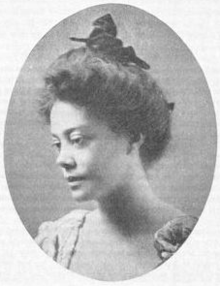
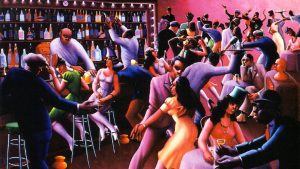 Nelson in addition to being an author was a civil rights activist. Her background consisted of African American, Anglo, Native American, and Creole heritage. Nelson’s heritage greatly influenced her opinions and some her published work. Her work consists of various topics such as difficulties women face, racism, oppression, and sexuality. She was known to have many sexual relationships with not only men but women as well, it was very controversial for her time but Nelson was Bisexual.
Nelson in addition to being an author was a civil rights activist. Her background consisted of African American, Anglo, Native American, and Creole heritage. Nelson’s heritage greatly influenced her opinions and some her published work. Her work consists of various topics such as difficulties women face, racism, oppression, and sexuality. She was known to have many sexual relationships with not only men but women as well, it was very controversial for her time but Nelson was Bisexual.
This topic interests me because poetry is my favorite form of writing. Nelson is one of the few poets I am familiar with from New Orleans. I thoroughly enjoy her work, and connect to various aspects of her life. Other aspects of her life that I cannot empathize with still interest me and I enjoy learning about them. Specifically her work as a civil rights activist. 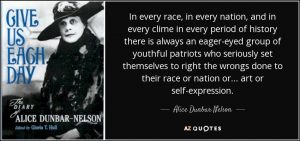
Some questions I intend to pose are the following:
March 13, 2018
by vanderzon21
Comments Off on Jean Laffite – Smuggler, Hero, or Both?
I intend to pursue the topic of smuggling in New Orleans, one of the trades that the city was founded upon (if inadvertently). Through this study, I hope to further unveil the exploits of Jean Laffite, a historical figure of great controversy that continues to befuddle historians to this day.
Jean Laffite, his brother Pierre Laffite, and their gang of Barataria pirates were notorious throughout New Orleans for smuggling not only goods and produce, but slaves as well. Initially painted as a Robin Hood-type figure, Jean Laffite seemed to fall from this pedestal as his gang continued to partake in the international slave trade well after the 1808 Article 1 Section 9 of the United States Constitution was passed and enforced. He was no longer the harrowing figure he had been, which led to a larger target being placed on him. Yet due to Laffite’s powerful influence and intensely compelling lawyers, he and his men evaded prison for years.
Eventually, Andrew Jackson caught Laffite but gave him the opportunity to redeem himself and his men during the War of 1812. Out of which, they arose victorious and pardoned heroes.
Thus, do Jean Laffite’s days as a war hero in 1812 counteract the egregious acts he committed prior to his battle prowess? Was Jean Laffite truly a folk hero and a true patriot of the United States of America? Or was he merely a romanticized scoundrel that went to the highest bidder – whether it be for money or for his life and freedom?
March 13, 2018
by bekisz20
Comments Off on Desire or Duty?
A Streetcar Named Desire, by Tennessee Williams, and Belocq’s Ophelia by Natasha Trethewey tell the tales of two different women in very different circumstances, yet who each are driven to make similar choices. Their choices however, do not offer what was perhaps expected, they yield different results.
The main character of A Streetcar Named Desire is Blanche DuBois, a formerly wealthy woman who falls from her station in life and enters into the life of prostitution. Her choice to do so allows her a certain release at first, but her actions force her to leave town. Her past soon catches up with her and she realizes that she cannot escape the life she left. In the end, both her internal and external struggles give out. Coming to terms with her fate, she finds a certain peace and as she is led away to a mental institution and to a new life where she will perhaps feel as trapped as before, haunted by her past once more.
The young woman in Belocq’s photograph, and the subject of Natasha Trethewey’s book, was also a prostitute. The character of Ophelia, brought to life in Trethewey’s words is a light skinned woman of color, who hopes that her skin will pass her off as white in order to secure a job. When this fails, not because of her skin color, but because her skills are not needed, she is forced to enter a life of prostitution to support herself. Despite her brief spell of relative freedom from who she is, it circles back to loom over her once more as she becomes an “exotic beauty” in a “colored brothel.” And yet, she can support herself, although she is relegated to remain in the brothel and the red-light district. Thus she achieves a freedom of sorts from a life she left behind, but she cannot entirely escape it, and she trades one captivity for another.
The two women in these stories both feel trapped by their pasts. By escaping their former lives, they seek to build new ones and start anew, but their pasts remain close behind them. As they both realize this, they must come to terms with the reality of their positions, and accept the “freedoms” that accompany their new lives. What freedoms? Blanche’s “freedom” is that she ultimately chooses not to fight back, with some coaxing from the doctor, and while this is not “free” as one might normally define the word, her freedom of choice is one of her only remaining choices. She may see it as a freedom from the life she’s been living, although she is not being released from anything. Ophelia’s “freedom” is that she is free from the uncertainty that she once held about her ability to support herself. She no longer has to worry about where her next meal will come from, and so, in a way, although she put herself in captivity, she can live free of at least that worry.
While neither Blanche nor Ophelia ever truly escape from their past lives, they change their lives, for better or for worse. Do you believe that they achieved a type of freedom?
March 13, 2018
by ahson21
Comments Off on Evaluation of Angola and Orleans Parish Prison
The question I am asking is how does the structure of the New Orleans correctional system contribute to the mistreatment of prisoners at Angola? What causes Angola prison to provide more inadequate, abusive and neglectful treatment of their prisoners then other prisons throughout the United States? I will answer this question through researching various examples of corruption that have been seen in the practices of staff in the Orleans Parish and Angola correctional systems. In addition, a good way to fulfil this purpose would be through comparing and contrasting these institutions practices and standards to those of more successful and humane judicial systems in the United States. Through expanding upon the instilled daily norms of the prisoners in these facilities, the larger problem at hand can be identified and rectified. The rectification process of this
 problem, can possibly be applied to other similarly unjust and inhumane systems throughout the country. I have an interest in this project as I hope to potentially enter the field of psychology, more specifically, criminal psychology. Through researching the system in which these inmates are a part of, it is possible to understand the potential psychological effects of a corrupt system and potential solutions.
problem, can possibly be applied to other similarly unjust and inhumane systems throughout the country. I have an interest in this project as I hope to potentially enter the field of psychology, more specifically, criminal psychology. Through researching the system in which these inmates are a part of, it is possible to understand the potential psychological effects of a corrupt system and potential solutions.